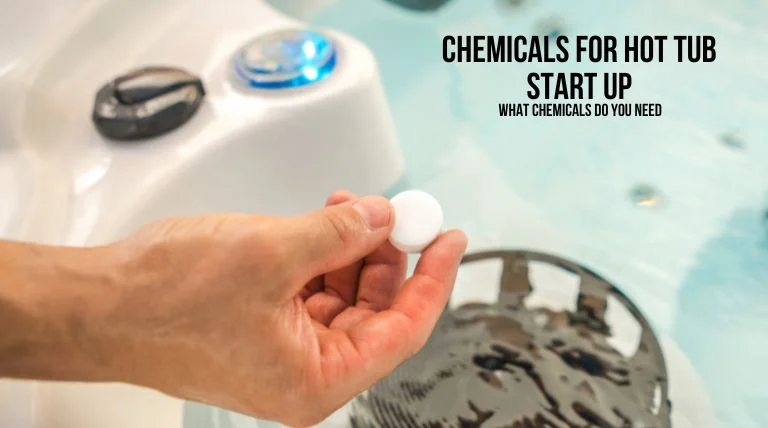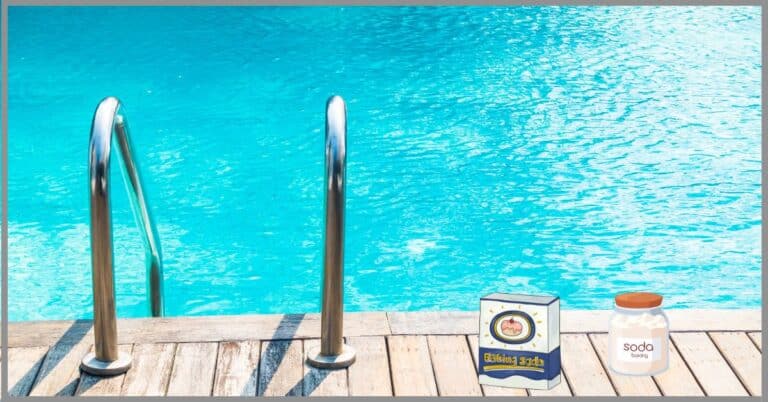The Essential Guide to Hot Tub Chemicals: Startup and Maintenance
New to hot tub ownership? Master the art of sparkling water with our guide to essential startup chemicals! Learn how to choose, measure, and add them for a safe and relaxing hot tub experience.
Welcome to the exciting journey of hot tub ownership! As a new hot tub owner, you might soon discover that achieving the perfect, sparkling water condition involves a bit more than just filling it up and diving in. The secret to a safe and delightful hot tub experience is maintaining the correct chemical balance.
This is crucial not only for the longevity of your hot tub but also for safeguarding your health by preventing the proliferation of bacteria and other unsanitary conditions.
In this blog post, we’ll explore the essential chemicals necessary for a successful hot tub startup. We’ll walk you through the process of choosing, measuring, and adding the right chemicals to ensure your hot tub is primed for relaxation.
Whether you’re looking to grasp the fundamentals or in search of recommendations for the best products, this guide is here to assist you. So, let’s begin this adventure towards pristine, soothing waters!
Starting Up Your Hot Tub
Embarking on the hot tub journey begins with the initial setup. Properly starting your hot tub sets the stage for a hassle-free experience. Here’s how to ensure your hot tub’s first splash is a success:
The Essential Chemicals You’ll Need Before you begin, it’s important to gather the necessary chemicals. You’ll need a sanitizer to keep the water clean, a pH balancer to maintain the water’s acidity, and a shock treatment to eliminate contaminants. Here’s a quick list:
- Sanitizer (Chlorine or Bromine)
- pH Increaser/Decreaser
- Alkalinity Increaser
- Calcium Hardness Increaser
- Shock Treatment
- Metal Sequestrant (optional, for areas with heavy metals in water)
Measuring and Adding Chemicals:
Once you have your chemicals ready, it’s time to add them to your hot tub. But how much of each, and in what order? Follow these steps:
- Fill your hot tub with water and turn on the filtration system.
- Test the water using test strips or a liquid test kit to determine the current pH and alkalinity levels.
- Adjust the pH and alkalinity levels using increasers or decreasers as needed.
- Add the sanitizer of your choice, following the manufacturer’s instructions for the initial dose.
- If using a metal sequestrant, add it now to prevent staining from metals in the water.
- Finally, add a shock treatment to eliminate any remaining contaminants.
[wps_alert type=”primary”]Remember, patience is key. Allow the chemicals to circulate and retest the water after a few hours to ensure everything is balanced before you enjoy your first dip.[/wps_alert]
How to start up a hot tub for the first time? To start up a hot tub for the first time, fill it with water, turn on the filtration system, and then add the necessary chemicals such as sanitizer, pH balancer, and shock treatment. Allow the chemicals to circulate and retest the water after a few hours to ensure everything is balanced.
What chemicals do you put in a hot tub to start it up? When starting up a hot tub, you typically need a sanitizer (like chlorine or bromine), a pH balancer, alkalinity increaser, calcium hardness increaser, and a shock treatment. You may also need a metal sequestrant if your water has heavy metals.
Do I need to shock my hot tub before first use? Yes, it’s recommended to shock your hot tub before the first use to eliminate any contaminants that might be present in the water after filling it up.
What should I do when I first fill my hot tub? When you first fill your hot tub, start by testing the water to check pH and alkalinity levels. Adjust these levels as needed, add the sanitizer, and then shock the water. Make sure to let the chemicals circulate and retest the water before using the hot tub.
Choosing the Right Sanitizer
Maintaining a clean and safe hot tub requires selecting the appropriate sanitizer. Let’s explore the two main options:
Chlorine vs. Bromine
- Chlorine:
- Pros: Widely used, effective at killing bacteria and algae, cost-effective.
- Cons: Requires regular monitoring and adjustment, can cause skin and eye irritation.
- Bromine:
- Pros: More stable in hot water, less odor, gentler on skin and eyes.
- Cons: Slightly more expensive, less effective against algae.
Choose the sanitizer that aligns with your preferences and needs. Remember to follow the manufacturer’s guidelines for proper usage.
The Role of Metal Sequestrants
- If your water source contains metals (like iron or copper), consider using a metal sequestrant. It prevents staining and scale buildup caused by these metals.

Investigating the Best Chemicals for Your Hot Tub
Now that we’ve covered the basics, let’s dive into exploring the best chemicals for your hot tub startup. Whether you’re a cost-conscious owner or prioritize ease of use, there are options to consider:
Factors to Consider
- Cost: Some chemicals may be more budget-friendly than others. Consider the long-term expenses.
- Ease of Use: Are you comfortable with daily maintenance, or do you prefer a set-it-and-forget-it approach?
- Effectiveness: Look for chemicals that effectively sanitize and balance water without causing skin or eye irritation.
Chlorine Alternatives
- Beyond chlorine and bromine, explore alternatives like ozone generators, saltwater systems, or mineral cartridges.
- Each has its pros and cons, so choose based on your preferences and needs.
Testing and Balancing Your Water
Maintaining the right chemical balance is an ongoing process. Let’s explore how to keep your hot tub water in check:
How to Test Your Hot Tub Water
- Regularly test your water using test strips or a liquid test kit.
- Focus on three key parameters:
- pH: Aim for a pH level between 7.2 and 7.8. Adjust using pH increasers or decreasers.
- Alkalinity: Keep alkalinity levels between 80 and 120 ppm. Use an alkalinity increaser if needed.
- Sanitizer Levels: Ensure your chosen sanitizer (chlorine or bromine) is within the recommended range.
Adjusting Chemical Levels
- If pH or alkalinity is off, make gradual adjustments. Avoid drastic changes.
- Shock your hot tub periodically to maintain water clarity and eliminate contaminants.
Purchasing Your Chemicals
Now that you’re well-versed in the chemical essentials, let’s explore where to acquire them:
Where to Buy Hot Tub Chemicals
- Online Suppliers: Many reputable online retailers offer a wide range of hot tub chemicals. Look for well-established websites that provide detailed product information and customer reviews.
- Local Stores: Visit local pool and spa stores. They often carry a variety of hot tub chemicals and can provide personalized advice.
- Big-Box Retailers: Some large retail chains also stock hot tub supplies. Check their garden or outdoor sections.
Pre-Packaged Chemical Kits
- If you prefer convenience, consider purchasing a pre-packaged hot tub startup kit. These kits typically include all the necessary chemicals in one bundle.
Local Shopping Guide
Finding the right hot tub chemicals locally is essential for quick access and personalized assistance. Here’s how to locate nearby stores:
Finding Hot Tub Stores Near You
- Local Pool and Spa Stores: Visit specialty pool and spa stores in your area. They often carry a wide selection of hot tub chemicals and accessories. The staff can provide expert advice based on your specific needs.
- Garden Centers and Home Improvement Stores: Check out garden centers or large home improvement retailers. They may have a dedicated section for pool and spa supplies, including hot tub chemicals.
- Ask Fellow Hot Tub Owners: Reach out to friends, neighbors, or local hot tub communities. They might recommend hidden gems or lesser-known stores.
Closing Arguments:
You’ve journeyed through the essentials of hot tub care with us, and now it’s time to put that knowledge into practice. At Hot Tub Patio, we’re committed to ensuring your hot tub experience is nothing short of spectacular. Remember, the key to pristine waters lies in the balance of chemicals and the joy of maintenance.
We invite you to share your experiences or any questions you might have in the comments below. Have you found a particular chemical brand that works wonders for your hot tub? Or maybe you’ve discovered a maintenance hack that saves time? Let’s continue the conversation and help each other create the perfect hot tub oasis.
Common Queries:
[wps_faq style=”classic” question=”What are the ingredients in your hot tub chemicals?”]There are three main ingredients in hot tub chemicals: chlorine, bromine, and pH adjusters. Chlorine is used to kill bacteria and algae, bromine is used to control fungus and bacteria, and pH adjusters maintain the water’s pH balance.[/wps_faq]
[wps_faq style=”classic” question=”How often do I need to add hot tub chemicals?”]You should add chemicals every week or two.[/wps_faq]
[wps_faq style=”classic” question=”What’s the difference between a hot tub filter and a sanitizer?”]A filter helps to remove dirt and debris from the water, while a hot tub sanitizer helps to kill bacteria and other microorganisms.[/wps_faq]
[wps_faq style=”classic” question=”What’s chemicals needed to start up a hot tub?”]A few chemicals are needed to start it, including chlorine and bromine. You’ll also need a pH balancer and an algaecide to keep the water clean and free of bacteria.[/wps_faq]
[wps_faq style=”classic” question=”What are the best chemicals for hot tub start up?”]You can use a few different chemicals to clean it, but chlorine is generally the most effective. You can also use bromine, which can be a bit more expensive. Whichever chemical you choose, follow the directions carefully to avoid damaging it.[/wps_faq]
[wps_faq style=”classic” question=”What are the potential risks associated with using chemicals?”]The potential risks associated with using chemicals include skin irritation, respiratory problems, and chemical burns.[/wps_faq]








